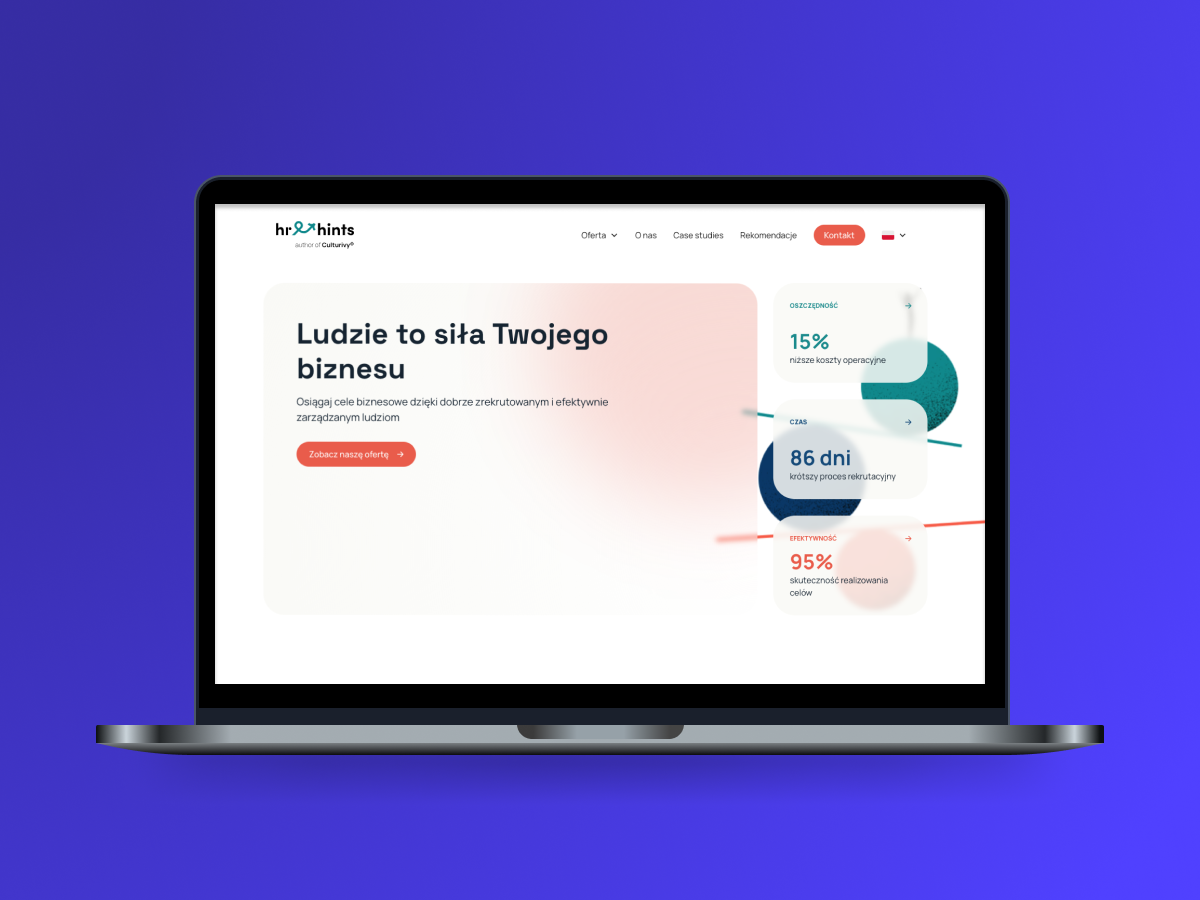HR Hints – a website for a modern company offering forward-thinking HR solutions.
UX/UI, Web development
See the LIVE project
Umów się na bezpłatną konsultację
Twoje dane przetwarzamy zgodnie z naszą polityką prywatności.
Together with the client's marketing team, Boring Owl created a new version of the website with the goal of simplifying the communication of offerings, enhancing visual design and improving the user experience.
Challenge
The main focus of the project was to design and implement an intuitive, aesthetically pleasing and flexible website that:
- Presents HR Hints' offer in a more structured and accessible way.
- Engages users through modern UX/UI solutions.
- Allows easy editing and expansion of content by the HR Hints team.
- It is fully responsive and available in two languages.
One of the key challenges was the need to make all views fully responsive - only some of the components used from the Relume library were adapted for mobile devices. The second major challenge was to allow the HR Hints team to easily edit content and create new pages from ready-made sections without having to involve technical specialists.

Solution
Boring Owl's team developed a complex project that was implemented in Webflow technology using the No Code approach.
- Development: Relume component library was used, which allowed projects to be quickly migrated from Figma to Webflow. This allowed design and implementation to take place in parallel.
- CMS: CMS with suitably configured filters was created for elements like case studies, recommendations or customer logos.
Key Features
- Division of offerings by personas (Startup/Scaleup, Investor, Entrepreneur) and service type (Recruitment, Team Management).
- Responsive and modern interface adapted to mobile devices.
- Animations and micro-interactions affecting positive user experience.
- CMS for easy content creation.

Results
- Increased user engagement through personalized and visually appealing content presentation.
- Arranging the structure of the offer made it easier for potential customers to understand HR Hints' services.
- Increased site interactions and reduced path to key information.
- Enabling the HR Hints team to manage content themselves.
Summary
The project for HR Hints was a comprehensive initiative that seamlessly blended modern design with a well-thought-out content structure and full editability. By working closely with the client, we developed a website that not only better reflects the brand’s identity but also effectively meets the needs of various target audiences - from startups to investors. Built on a flexible Webflow foundation and powered by a thoughtfully implemented CMS, the site gives the client complete control over content, enabling greater autonomy and making it easier to scale marketing efforts.



